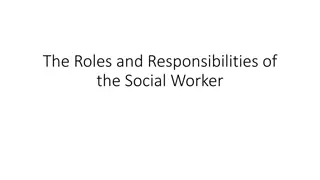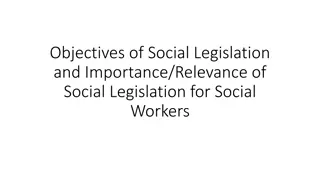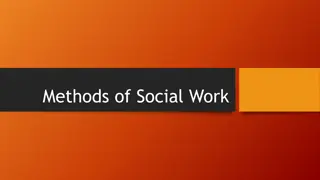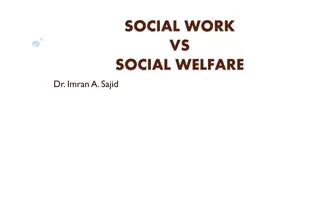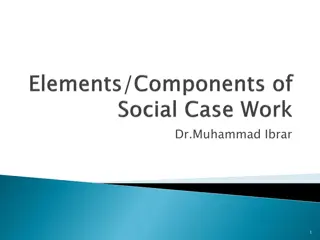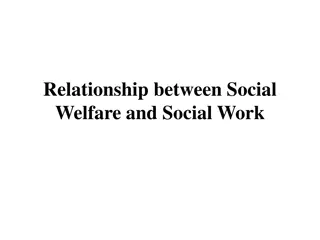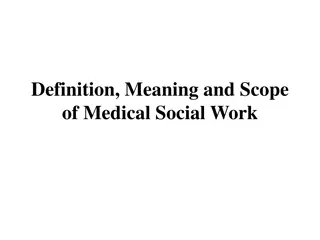Managing Transference in Social Work
Transference and countertransference are explored in a professional context, discussing unconscious redirection of feelings and inappropriate responses. Learn strategies to manage transference and countertransference effectively.
Download Presentation

Please find below an Image/Link to download the presentation.
The content on the website is provided AS IS for your information and personal use only. It may not be sold, licensed, or shared on other websites without obtaining consent from the author.If you encounter any issues during the download, it is possible that the publisher has removed the file from their server.
You are allowed to download the files provided on this website for personal or commercial use, subject to the condition that they are used lawfully. All files are the property of their respective owners.
The content on the website is provided AS IS for your information and personal use only. It may not be sold, licensed, or shared on other websites without obtaining consent from the author.
E N D
Presentation Transcript
Transference and Countertransference Boston University School of Social Work Center for Innovation in Social Work & Health
Transference and Countertransference Learning Objectives Boston University Slideshow Title Goes Here At the end of this unit, you will be able to: Define transference and countertransference Explain at least three ways to manage transference Explain at least five ways to manage countertransference
Transference and Countertransference What is Transference and Countertransference? Boston University Slideshow Title Goes Here Transference: Unconscious redirection of feelings from one person to another Countertransference: Inappropriate response in the present triggered by a past relationship
Transference and Countertransference Transference Boston University Slideshow Title Goes Here CHW represents something other than their roles as the CHW for the patient Client has assigned certain feelings to the CHW that are unrelated to CHW Client has certain expectations because of these assumptions and feelings Client may act on these feelings and not realize it
Transference and Countertransference Managing Transference Boston University Slideshow Title Goes Here Helping the CHW recognize that these feelings are normal Supporting the CHW in addressing these feelings Referring the CHW for added clinical supervision or independent mental health services/EAP services Transfer client case (if necessary) to another CHW Review boundary activities or educational materials to reinforce staying in your lane
Transference and Countertransference Countertransference Boston University Slideshow Title Goes Here Holding beliefs about exactly what a client needs to do Holding assumptions about a client without verifying them Going out of the way for a client, over-extending oneself even though client is not working very hard for themselves Avoiding client Feeling of being manipulated Spending too much time with one client for an extended period of time Attraction to a client Unrealistic expectations of a client Client reminds CHW of someone in their life
Transference and Countertransference This is how I got infected Tom didn t disclose to me and I had to find out the hard way! Boston University Slideshow Title Goes Here I can t believe this, she s been having unprotected sex with her partner without disclosing her status? I have to tell her right now . . .
Transference and Countertransference Managing Countertransference Boston University Slideshow Title Goes Here Question assumptions Remember limits Remember that supporting clients does not always lead to ideal outcomes Get help if needed Get supportive feedback Consider feelings about the client (s) that trigger CHW Talk to a trusted colleague, supervisor, counselor, or other supportive person Engage in stress-reduction techniques Reassess boundaries with client Consider spending more or less energy on this client Remember that the most important job is to role model self care
Transference and Countertransference Boston University Slideshow Title Goes Here The key to success in managing transference/countertransference is the ability to endure the tension of the opposites without abandoning the process.






